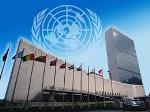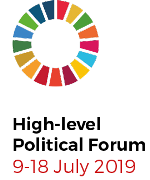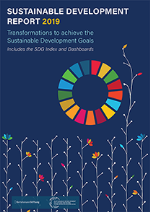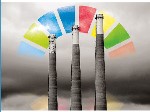Global Policy Watch
Published on Wed, 2019-08-28 16:42
Over a hundred Heads of State or Government are expected to arrive to New York in the last week of September for a series of back-to-back summit meetings at the opening of the General Assembly of the United Nations. On top of the usual photo opportunities and a myriad of bilateral meetings between leaders, this High-level week provides an opportunity for multilateral action to shift away from ‘business as usual’ and address some enormous current challenges.
|
Published on Tue, 2019-07-30 13:49
Since 2016, 142 countries worldwide have submitted Voluntary National Reviews (VNRs) as part of the UN High Level Political Forum (HLPF), reporting on progress made towards achieving the Sustainable Development Goals (SDGs), the action plan of the 2030 Agenda for Sustainable Development. The VNRs play a prominent role in the annual Economic and Social Council (ECOSOC) HLPF with both criticism and acclaim. However, it’s important to consider how VNRs are taking hold beyond the formal sessions in the HLPF every year. The VNRs elucidate gaps in the global indicator framework and are appearing in discussions of UN Country Teams (UNCTs), the UN Statistical Commission and the Committee for Development Policy (CDP).
|
Published on Thu, 2019-07-11 18:45
The 2030 Agenda and the SDGs have also captured the attention of many parts of the UN system, which are slowly restructuring their work plans towards their achievement. This fact can be seen in negotiations on UN development system reform and country-level reporting; on the push for a Data Revolution as well as Information and Technology. The VNRs are being analysed by civil society groups as well as the UN Committee on Development Policy to see the extent to which they are focused on leaving no one behind, and tackling the furthest behind first, as well as the extent to which they address trade-offs between the goals and especially spillover effects from global policies that impede their achievement.
|
Published on Thu, 2019-07-11 18:40
Since 2015, the Civil Society Reflection Group (CSRG) has been monitoring how governments and international organizations have been implementing the SDGs and the 2030 Agenda. In his assessment of progress on SDG 13 – taking urgent action to combat climate change— Indrajit Bose, from the Third World Network, reminds us that Cyclone Idai, which devastated Mozambique, Zimbabwe and Malawi in March is just the most recent example of the catastrophic impacts of climate change on developing countries.
|
Published on Wed, 2019-07-03 00:00
Denmark, Sweden and Finland are the top ranking countries in terms of sustainable development, while Niger, Chad and the Central African Republic are the worse performers, according to the recently launched Sustainable Development Report 2019, by the Bertelsmann Foundation of Germany and the Sustainable Development Solutions Network, based in New York and Paris.*
The Bertelsmann-SDSN report includes 17 “dashboards” with indicators selected by the authors for each of the 17 Sustainable Development Goals, and a Global SDG Index that summarizes them in a single number and allows for the ranking of the 162 countries for which enough data are available.
|
Published on Mon, 2019-06-24 15:55
The UN Secretary-General’s progress report on the SDGs shows that many will be left behind by 2030, but omits any mention to the responsibilities of the rich.
UN progress reports on almost any issue on which the secretariat is asked to inform Member States tend to follow the classic glass-half-full formula: We are moving, but much remains to be done.
Not surprisingly, this approach is repeated in the latest draft of the UN Secretary General’s report “Progress towards the Sustainable Development Goals” to be officially published in July as an input for the High Level Political Forum (HLPF) where the 2030 Agenda is going to be reviewed: “Progress has been made in a number of Goals and targets and a wealth of action has been undertaken;” however, progress has been slow on many Goals, (…) the most vulnerable people and countries continue to suffer the most, and the global response thus far has not been ambitious enough.” (excerpted from the Summary).
|
Published on Mon, 2019-06-17 09:14
The Political Declaration for the High Level Political Forum will be adopted by Heads of State and Government (HOSG) at the General Assembly’s Sustainable Development Goals (SDG) Summit in September 2019. With the aim of reaching consensus, Member States have started negotiations and are now deliberating a second draft of the Political Declaration. The Declaration is currently titled, “Gearing up for a Decade of Action and Delivery for Sustainable Development: Political Declaration of the SDG Summit” and is divided into three sections: “I. Our Commitment, II. Our World Today, III. Our Call to Accelerated Action.”
|
Published on Tue, 2019-04-02 08:57
Governments have dedicated a pivotal role to the private sector in the implementation and financing of the 2030 Agenda and the SDGs. This has pushed a turn towards the private sector, the promotion of multi-stakeholder partnerships between public and private actors. However, far too often there is a considerable gap between the social and environmental commitments companies make publicly in political fora like the UN and the actual effects of their production patterns and investment strategies on people and the environment.
|
Published on Mon, 2019-03-25 14:34
A common theme that ran through the 50th Session of the UN Statistical Commission, March 2019, was the often tense interface between data and policy-making and the asymmetrical power dynamics that shape it. This was evident in the several reports submitted for consideration by the Commission. One from the UN Statistics Division (UNSD) reported on the federated system of data hubs, designed to integrate new data sources into a platform which is accessible to National Statistics Offices (NSOs) and creates comparable data among users. Another was a proposal by the High-Level Group for Partnership, Cooperation, and Capacity Building for the 2030 Agenda for Sustainable Development for a UN Chief Statistician to enhance the voice of statistics in UN policy processes.
|
Published on Mon, 2019-03-04 12:28
Statisticians from around the world, meeting at the UN Statistical Commission in March, will again take stock of progress in the world of data over the previous 12 months, largely driven by the 2030 Agenda for Sustainable Development. The official report on filling the gaps in the global indicator framework—a clear priority of the 2018 Commission—show that while some progress has been made much has stalled. Gaps and tensions continue over the selection and interpretation of indicators, the data to fill them, the selection of partners as well as control of the process and ownership of the results.
These struggles go back to the negotiations over the 2030 Agenda and its goals and targets, and have continued into the effort to define the global indicator framework. A special edition of the Global Policy Journal details the complex power dynamics involved throughout this process. Contributors show that the selection of indicators does not depend purely on technical considerations but ultimately concerns political questions of competing priorities among a range of different players. One proposal, outlined below, argues that national statistical systems urgently must take charge of this process, and shows how they can do it.
|
SUSCRIBE TO OUR NEWSLETTER
Submit

|







